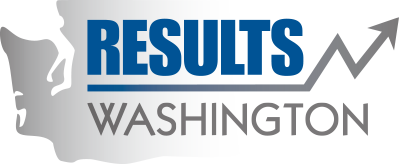Archived: Reduce opportunity gaps for all students
The size of the opportunity gap is different based on which data points are selected and there are differences between racial/ethnic groups based on poverty status. (See interactive tool at http://www.k12.wa.us/DataAdmin/default.aspx under "download information - assessment data" for charts.)
A simplistic way of measure the opportunity gap is to look at students not in the gap (Non-Targeted Subgroups including White and Asian students) and students in the gap (Targeted Subgroups including American Indian, Black, Hispanic, Pacific Islander, and students who receive Free & Reduced Price Lunch, Special Education and ELL services). The tables below show a compressed view of the gap between Targeted and Non-Targeted Subgroups.
All students, including students in racial or programmatic subgroups (i.e., Special Education, English Language Programs) deserve the opportunity to become college and career ready. Washington cannot afford to allow opportunity gaps to persist and for some groups to receive less educational opportunities and be less successful than their peers. Historically disadvantaged racial and ethnic student groups, as well as student in poverty demonstrate disproportionately low student achievement than their White, Asian and non- low income peers. Additionally, many students who participate in Special Education and the English Language Learner programs are part of the opportunity gap. It is the public schools’ responsibility to facilitate accelerated learning to eliminate the gaps and allow all students to be successful, regardless of racial/ethnic background, socioeconomic, Special Education or English language learner status.
The Office of Superintendent of Public Instruction created the Opportunity Gap Data Tool to be able to examine student achievement data by both racial/ethnic subgroups , gender, poverty status, program participation (students receiving special education services, English Language learners). The Opportunity Gap Data Tool features dynamic filters; allowing users to create unique reports disaggregated by different data points. The Opportunity Gap Data Tool is on our website here: http://www.k12.wa.us/DataAdmin/default.aspx under "download information - assessment data".
- Implementation of new state learning standards (Common Core State Standards, Next Generation Science Standards, and English Language Development Standards)
- Focusing Title 1 and Learning Assistance Program efforts on implementation of research-based best practices to support students in the opportunity gap
- Providing technical assistance to schools identified as needing to focus on the needs of low income and racial/ ethnic students, as well as students who receive special education or English language support. Technical assistance is provided within the federal Turnaround Principles from the Department of Education:
Principle 1: Provide strong leadership
Principle 2: Ensure that teachers are effective and able to improve instruction
Principle 3: Redesign the school day, week or year to include additional time for student learning and teacher collaboration
Principle 4: Strengthen the school’s instructional program based on student needs to ensure that the instructional program is research-based, rigorous and aligned with state standards
Principle 5: Use data to inform instruction and for continuous improvement, including providing time for collaboration on the use of data
Principle 6: Establish a school environment that improves school safety and discipline and address other non-academic factors that impact student achievement, such students’ social, emotional and health needs
Principle 7: Provide ongoing mechanisms for family and community engagement
Encourage the legislature to fully fund education. There is minimal basic education funding targeted at closing the opportunity gap or supporting schools and school districts to strengthen their work in the closing the opportunity gap under the federal Turnaround Principles.
Reported by: The Office of the Superintendent of Public Instruction (OSPI)
